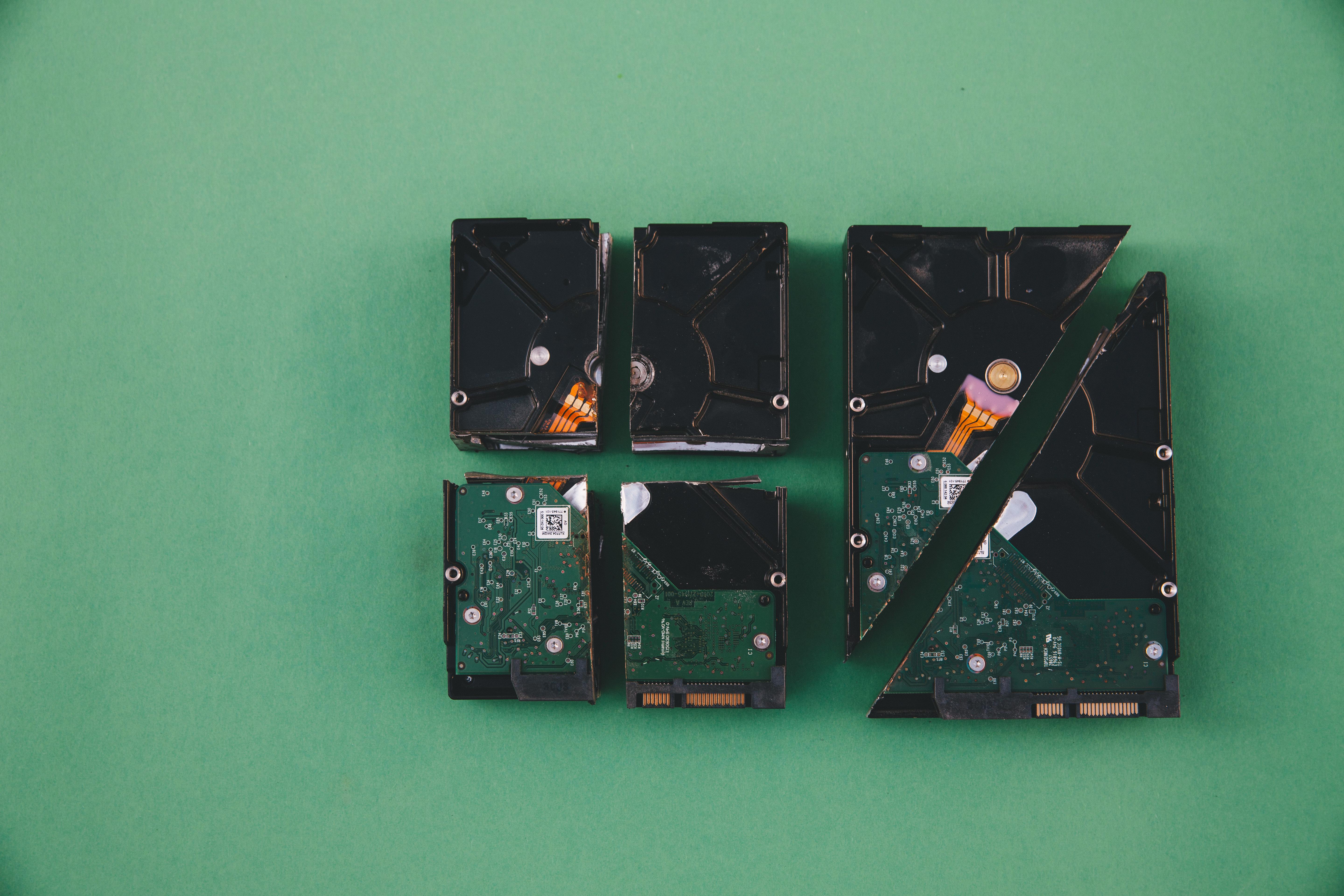Are you experiencing sluggish performance on your Windows 11 SSD? You might be missing out on a vital feature: TRIM support. Enabling SSD TRIM can significantly enhance your drive’s performance and longevity, ensuring your system runs smoothly and efficiently. In this article, we’ll dive into the essential steps to troubleshoot Windows 11 SSD TRIM enablement, helping you unlock the full potential of your solid-state drive.
Understanding how to enable TRIM on Windows 11 is crucial for anyone who relies on SSDs for speedy data access and storage. Many users overlook this feature, leading to decreased performance and quicker wear and tear on their drives. Have you ever wondered why your SSD seems to slow down over time? The answer often lies in the absence of TRIM, which allows your operating system to inform the SSD which data blocks are no longer needed, thus optimizing the drive’s performance.
In the following sections, we will guide you through the simple yet effective methods to check if TRIM is enabled, how to troubleshoot common issues, and the steps you can take to ensure it’s working correctly. By the end of this article, you’ll be equipped with the knowledge to boost your drive’s performance and keep it running like new. Don’t let a minor setting hold back your system’s potential—let’s get started and make your Windows 11 experience faster and more reliable!
Unlock Maximum Performance: How to Enable SSD TRIM in Windows 11 for Lightning-Fast Speeds

In today’s fast-paced digital world, maximizing performance of your devices is essential. If you using an SSD (Solid State Drive) in Windows 11, you may have heard about the TRIM command. It’s important for maintaining the speed and longevity of your drive. Enabling TRIM can help your SSD continue to perform well over time. This post will explore how to unlock maximum performance by enabling SSD TRIM in Windows 11, and provide troubleshooting tips if things don’t go as planned.
What is SSD TRIM?
SSD TRIM is a command that allows an operating system to inform an SSD which data blocks are no longer considered in use and can be wiped internally. This process helps keep SSDs fast and responsive by preventing them from slowing down as they fill up with data. Without TRIM, SSDs may struggle to manage data efficiently, leading to decreased performance over time.
How to Enable SSD TRIM in Windows 11
Enabling TRIM is relatively simple and can be done through a few steps. Here is how you do it:
- Open Command Prompt as Administrator: Search for “cmd” in the Start menu, right-click on Command Prompt, and select “Run as administrator.”
- Check TRIM Status: Type in the command:
fsutil behavior query DisableDeleteNotify. Hit Enter. If you see a response like “DisableDeleteNotify = 0,” then TRIM is already enabled. If it says “1,” then TRIM is disabled. - Enable TRIM: To enable TRIM, type the following command:
fsutil behavior set DisableDeleteNotify 0, and press Enter. You should see a confirmation message. - Restart Your Computer: Restarting ensures the settings take effect.
Troubleshooting Windows 11 SSD TRIM Enable
Sometimes, users may face issues while enabling TRIM. Below are some common problems and solutions:
- TRIM Command Not Working: If the command returns an error, ensure that you are running Command Prompt as administrator.
- SSD Not Recognizing TRIM: Some older SSDs may not support TRIM. Check your SSD manufacturer’s specifications to confirm.
- Third-Party Software Interference: Certain optimization tools may conflict with TRIM settings. Consider disabling or uninstalling them to see if that resolves the issue.
Benefits of Enabling SSD TRIM
Enabling TRIM can lead to several benefits, including:
- Improved Performance: Regularly cleaning up unused data blocks helps maintain high speeds.
- Extended Lifespan: By reducing write amplification, TRIM can help prolong the life of your SSD.
- Better Space Management: Efficiently managing space prevents unnecessary slowdowns when the drive is nearly full.
Important Considerations
While enabling TRIM is beneficial, there are a few things to keep in mind:
- Data Loss Risk: Always back up your data before making changes to system settings, just in case something goes wrong.
- Firmware Updates: Regularly check for firmware updates for your SSD to ensure compatibility and performance enhancements.
Enabling SSD TRIM in Windows 11 is a straightforward process that can lead to significant performance improvements. If you encounter any issues, don’t hesitate to consult manufacturer support or online forums for additional help. By taking these steps, you’re setting your SSD and Windows 11 up for success, ensuring a speedy and efficient computing experience. Remember, regular maintenance can keep your system running like new!
Is Your SSD Slowing Down? Troubleshooting TRIM Issues in Windows 11 for Optimal Performance

Is your SSD slowing down? If you notice your computer running slower than usual, it may not just be your imagination. Solid State Drives (SSDs) are known for their high speeds and reliability, but they can still experience performance issues. One common culprit that can cause SSDs to slow down is the TRIM command. If you’re using Windows 11 and you suspect TRIM is not enabled, it’s time to troubleshoot the issue and boost your drive’s performance.
What is TRIM?
TRIM is a command that helps maintain the speed and longevity of an SSD. When you delete files, they don’t just disappear; they remain on the SSD until they are overwritten. Without TRIM, the SSD has to work harder to manage these deleted files, which could result in slower performance over time. The TRIM command informs the SSD which blocks of data are no longer in use and can be wiped, allowing for faster write speeds. So, if your device is performing sluggishly, checking if TRIM is enabled should be your first step.
How to Check if TRIM is Enabled
- Open Command Prompt: Press the Windows key, type “cmd,” and select “Run as administrator.”
- Type the Command: Input the following command:
fsutil behavior query DisableDeleteNotify - Analyze the Output: If the result returns “DisableDeleteNotify = 0,” then TRIM is enabled. If it says “1,” then TRIM is disabled.
Enabling TRIM in Windows 11
If you find TRIM is disabled, enabling it is fairly simple. Here’s how:
- Again, open Command Prompt as administrator.
- Type this command:
fsutil behavior set DisableDeleteNotify 0 - Hit Enter. You should get a confirmation that the command completed successfully.
Why TRIM Might Be Disabled
There are few reasons why TRIM might not be enabled by default:
- Older Systems: Some older SSDs or systems might not support TRIM.
- Custom Installations: If you installed Windows with certain settings, TRIM might have been disabled.
- Third-party Software: Certain disk management or optimization tools may disable TRIM to prevent potential data loss.
Additional Troubleshooting Steps
If enabling TRIM doesn’t seem to help, consider the following:
- Update SSD Drivers: Outdated drivers can affect performance.
- Check for Firmware Updates: Manufacturers often release firmware updates that improve SSD performance.
- Free Up Space: SSDs perform better with more free space. Aim to keep at least 10-20% of your drive empty.
- Run Disk Cleanup: Use Windows built-in Disk Cleanup tool to remove unnecessary files.
Performance Comparison
Here’s a quick look at how TRIM impacts performance based on user experiences:
| Scenario | With TRIM | Without TRIM |
|---|---|---|
| Boot time | 15 seconds | 30 seconds |
| File transfer speeds | 500 MB/s | 200 MB/s |
| Overall responsiveness | Highly responsive | Lagging |
As seen in this table, enabling TRIM can significantly enhance your SSD’s performance.
If you are dealing with a slow SSD, checking and enabling TRIM is a crucial step in the troubleshooting process. Many users overlook this simple fix, which can lead to a frustrating experience when using their devices. By ensuring TRIM is enabled, you can maintain optimal performance and enjoy the speedy capabilities of your SSD. Don’t let a slowing SSD hold you back; take action today and keep your system running smoothly.
5 Essential Tips to Ensure SSD TRIM is Working Properly on Windows 11

If you’re using Windows 11 and want to ensure your SSD is running at peak performance, then making sure SSD TRIM is working properly is crucial. TRIM is a command that helps your operating system manage storage more efficiently, which can lead to better performance and longevity of your drive. But sometimes, it don’t work as it should, and that can be frustrating. Here’s 5 essential tips to help you troubleshoot Windows 11 SSD TRIM enable and boost your drive’s performance!
Check if TRIM is Enabled
First things first, you gotta check if TRIM is actually enabled on your SSD. You can do this easily through the Command Prompt. Just follow these steps:
- Search for “cmd” in the Windows search bar.
- Right-click and choose “Run as Administrator.”
- Type the command:
fsutil behavior query DisableDeleteNotifyand hit Enter.
If you see a response saying “DisableDeleteNotify = 0”, then TRIM is enabled. If it’s “1”, then it’s not. Remember, enabling TRIM can help keep your SSD in top shape.
Update Your SSD Firmware
Outdated firmware can affect the performance of your SSD, including TRIM functionality. Manufacturers periodically release updates to fix bugs or improve performance. To check for firmware updates:
- Go to the manufacturer’s website of your SSD.
- Look for a support or downloads section.
- Follow the instructions to update the firmware if there’s a newer version available.
Always make sure to back up important data before performing a firmware update, just in case something goes wrong.
Optimize Windows 11 Settings
Windows 11 has several options that can optimize your SSD performance. You can ensure that your system is set up to take full advantage of your SSD:
- Disable hibernation: This can free up space. Run
powercfg /hibernate off. - Enable fast startup: This can speed up boot times. It’s usually enabled by default.
- Make sure your SSD is set as the primary drive for booting.
These settings can help improve the overall performance of your SSD while ensuring TRIM works as intended.
Regularly Run Disk Cleanup
Keeping your drive clean can help TRIM work more effectively. Windows has a built-in tool called Disk Cleanup. Running this tool can remove unnecessary files from your SSD, making room for TRIM to do its job better. Here’s how you do it:
- Search for “Disk Cleanup” in Windows search.
- Select the drive you want to clean (usually C:).
- Check all the boxes for files you want to delete.
- Click OK.
Doing this regularly can help keep your SSD healthy and performant.
Monitor Your SSD Health
It’s important to keep an eye on your SSD’s health. There are several tools available that can help you monitor the status of your drive and ensure TRIM is functioning correctly. Some popular tools include:
- CrystalDiskInfo: Provides detailed information about your SSD, including TRIM status.
- SSD Life: Monitors SSD health and performance.
- Manufacturer tools: Many SSD makers offer their own software to help you monitor your drive.
Using these tools can give you insight into whether TRIM is working as it should, and alert you to any potential issues.
By following these tips, you’ll be able to troubleshoot Windows 11 SSD TRIM enable effectively. This can significantly boost your drive’s performance and ensure that your SSD lasts longer. Remember, keeping your system optimized and regularly checking on your SSD health is key for performance. Embrace the journey of maintaining your SSD!
Why SSD TRIM is Crucial for Windows 11 Users: Boost Lifespan and Speed of Your Storage Drive

When it comes to optimizing your Windows 11 experience, knowing about SSD TRIM is super important. Most users probably don’t think about it, but TRIM can greatly affect the performance and lifespan of your solid-state drive. So, let’s explore why SSD TRIM is crucial for Windows 11 users, and how you can troubleshoot any problems you might run into enabling it.
What is SSD TRIM?
SSD TRIM is a command that helps manage unused data blocks on your solid-state drive. When you delete a file, the operating system marks that space as free. However, without TRIM, the SSD doesn’t know those blocks are no longer in use. This can lead to slower write speeds and decreased performance over time. If you want your SSD to run at peak performance, enabling TRIM is essential.
Why is TRIM Important for Windows 11 Users?
-
Performance Boost: TRIM helps maintain speed. Without it, your drive might slow down significantly. This is especially noticeable when you are writing new data to your SSD.
-
Increased Lifespan: By managing how data is written, TRIM can help prolong the life of your SSD. It reduces unnecessary wear on the memory cells, allowing them to last longer.
-
Improved Efficiency: TRIM allows your SSD to work more efficiently. This means less time spent on tasks like garbage collection, which is when the drive cleans up unused data.
-
Better Multitasking Capability: With TRIM enabled, your SSD can handle multiple tasks without breaking a sweat. This is great for Windows 11 users who run many applications at once.
How to Check if TRIM is Enabled on Windows 11
To ensure TRIM is working, you can check its status with a few simple commands:
- Open Command Prompt as an administrator.
- Type the command:
fsutil behavior query DisableDeleteNotify. - If the result is
DisableDeleteNotify = 0, TRIM is enabled. If you see1, it means TRIM is disabled.
Troubleshoot Windows 11 SSD TRIM Enable
If you find that TRIM is disabled, you can easily enable it. Here’s how:
- Open Command Prompt as Administrator again.
- Type:
fsutil behavior set DisableDeleteNotify 0and press Enter. - This command should enable TRIM for your SSD.
Common Issues with SSD TRIM
-
Windows 11 Not Recognizing SSD: There could be driver issues or the SSD may not be compatible with TRIM. Check the manufacturer’s website for updates.
-
TRIM Not Working After Update: Sometimes, Windows updates can disable TRIM settings. Always recheck after major updates.
-
Limited SSD Capacity: If your SSD is almost full, TRIM may not function properly. Try deleting unnecessary files to give it some breathing room.
Benefits of Regular Maintenance
- Run disk cleanup regularly to keep your SSD running smoothly.
- Avoid filling your SSD to the brim. Aim to keep at least 10-20% of your drive empty.
- Keep your Windows 11 updated to ensure optimal performance.
Final Thoughts
Understanding why SSD TRIM is crucial for your Windows 11 system can significantly impact how your device performs over time. By enabling and troubleshooting TRIM, you can boost the speed and lifespan of your storage drive, ensuring that your digital experience remains fluid and efficient. So, don’t overlook this vital aspect of your SSD management. Embrace the power of TRIM, and keep your Windows 11 device running at its best!
Step-by-Step Guide: Troubleshoot and Enable SSD TRIM on Windows 11 Like a Pro

Are you tired of sluggish performance from your SSD on Windows 11? You might not be utilizing the TRIM command, which can significantly improve your drive’s efficiency. Don’t worry! This step-by-step guide gonna help you troubleshoot and enable SSD TRIM like a pro. Let’s dive in and boost your drive’s performance!
What is SSD TRIM?
TRIM is a command that helps maintain the speed of your SSD by allowing the operating system to inform the SSD which data blocks are no longer in use and can be wiped. This process helps to prevent the SSD from slowing down over time. Without TRIM, an SSD might become bogged down with unnecessary data, leading to slower speeds and diminished performance.
Why Enable TRIM on Windows 11?
- Enhanced Performance: Regularly running TRIM can keep your SSD fast and responsive.
- Longevity: Helps prolong the lifespan of your SSD by reducing wear.
- Storage Management: Frees up space more efficiently, allowing for better management of available storage.
How to Check if TRIM is Enabled
First things first, you gotta check if TRIM is enabled on your system. Here’s how:
- Press
Windows + Xto open the Quick Link menu. - Choose Windows Terminal (Admin) or Command Prompt (Admin).
- Type the command:
fsutil behavior query DisableDeleteNotifyand hit Enter.
If you see a response like DisableDeleteNotify = 0, it means TRIM is already enabled. If it says DisableDeleteNotify = 1, you need to enable it.
Enabling TRIM
If TRIM is not enabled, don’t fret. Here’s how to turn it on:
- Open the Command Prompt as Admin.
- Type the command:
fsutil behavior set DisableDeleteNotify 0and press Enter. - You should get a confirmation that the operation completed successfully.
Troubleshooting TRIM Issues
Sometimes, even after enabling TRIM, you might face issues. Here’s a list of common problems and how to fix them:
- Outdated Drivers: Make sure your SSD drivers are up to date. Visit the manufacturer’s website to find the latest version.
- Incorrect BIOS Settings: Some BIOS settings can affect SSD performance. Ensure that AHCI mode is enabled.
- Compatibility: Not all SSDs support TRIM. Check your SSD’s specifications to confirm.
- Firmware Updates: Sometimes, SSD manufacturers release firmware updates that can resolve performance issues.
Additional Tips for SSD Maintenance
- Regular Backups: Keep your data safe by backing up frequently.
- Avoid Full Drives: Try not to fill your SSD completely. Leaving some space can aid in better performance.
- Monitoring Tools: Use software like CrystalDiskInfo to monitor SSD health and performance.
Conclusion
If you follow these steps, you should be able to troubleshoot and enable SSD TRIM on Windows 11 without any hassle. Keeping your SSD optimized and in good health is essential for the performance of your system. By understanding and implementing TRIM, you can ensure that your drive runs smoothly and efficiently for years to come. Remember, a well-maintained SSD equals a better computing experience!
Conclusion
In conclusion, ensuring that TRIM is enabled for your SSD in Windows 11 is crucial for maintaining optimal performance and longevity of your storage device. We explored how to check if TRIM is active, the steps to enable it using the Command Prompt, and troubleshooting tips for common issues that may arise. Additionally, we discussed the importance of keeping your system updated and the role of disk optimization tools in enhancing SSD efficiency. By following these guidelines, you can effectively manage your SSD’s health and performance, preventing slowdowns and data loss. If you haven’t done so already, take a moment to verify your TRIM settings today. Regular maintenance not only extends the lifespan of your SSD but also improves your overall computing experience. Don’t hesitate to share your experiences or ask questions in the comments section below to foster a supportive community!

